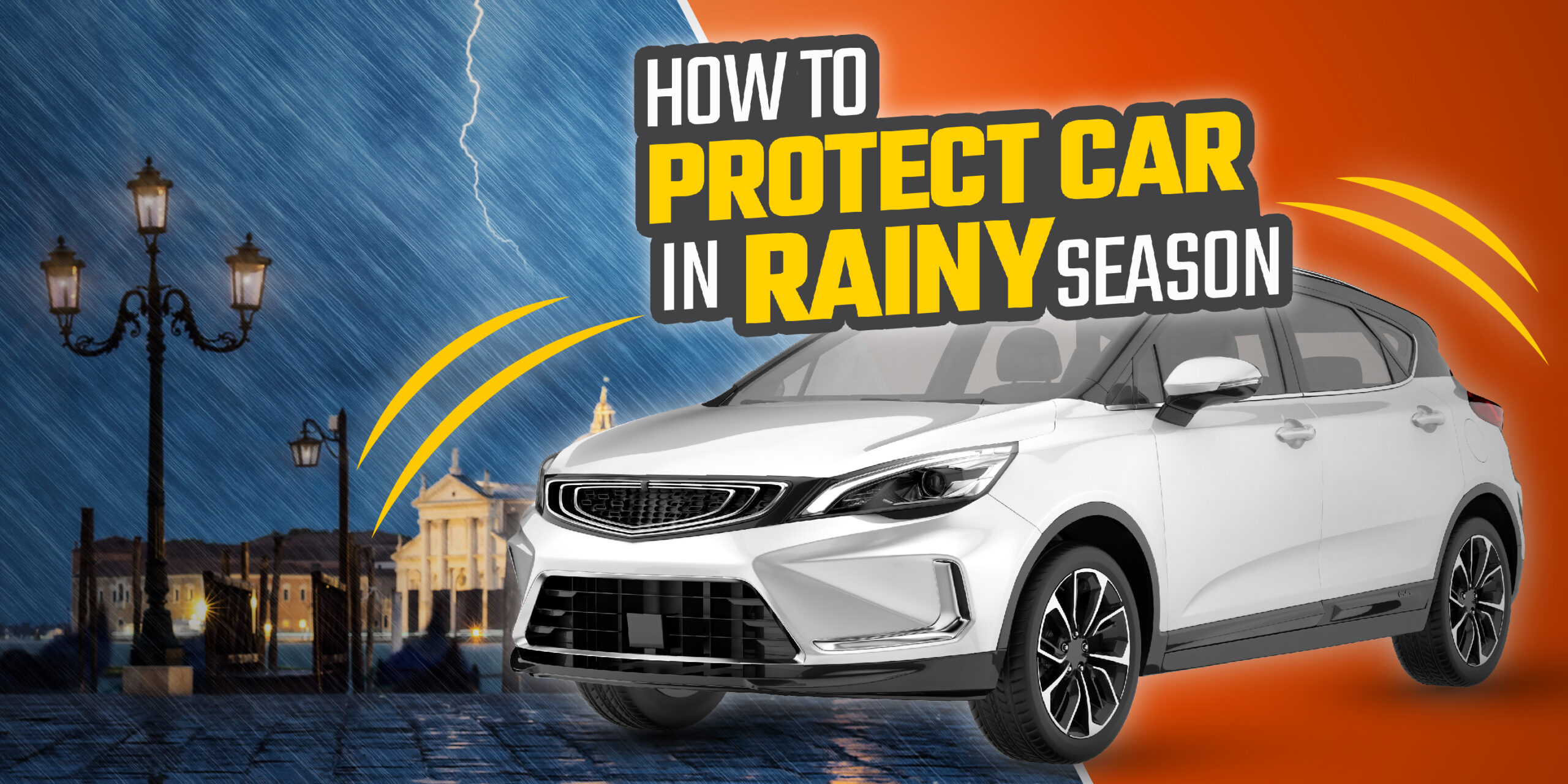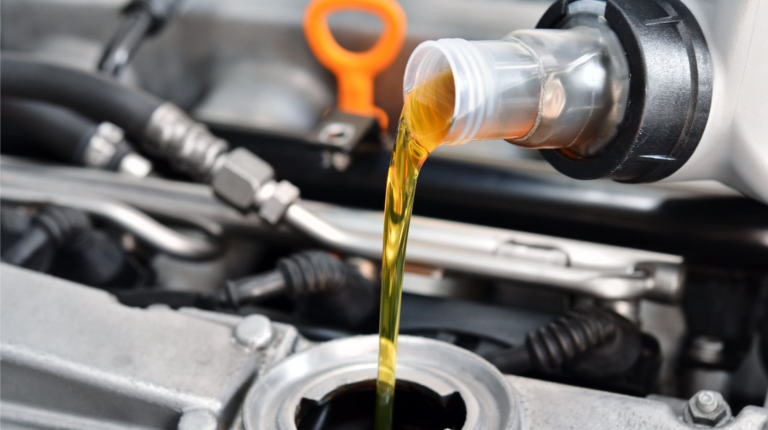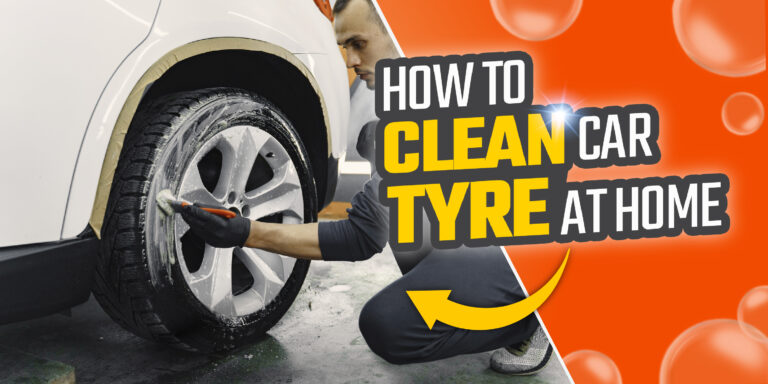
The rainy season poses some challenging weather conditions that can compromise your vehicle’s performance and overall safety on the road. It is essential to prioritise the protection of your car from rainy weather and practice safe driving habits for a pleasant journey. This blog will dive deep into how to protect car in rainy season and provide essential car care and safety tips for monsoon driving.
1. Car Care Tips For Rainy Season
By taking time to prepare your car for the Indian rainy season, you can enhance safety and improve your driving experience in rainy weather.
Safety First
Maintaining clear visibility and staying in control reduces the risks of accidents and ensures a smooth journey.
Check and Maintain Tires Before Driving
Tires are the only point of contact between your vehicle and the road, and this becomes crucial to maintain traction and control on wet roads. Inspect tires for signs of wear and ensure proper tread depth. Make sure they are at the correct tire pressure to prevent the risk of skidding and hydroplaning on slippery surfaces. All-weather or specific rain tires are the best option for enhanced performance and optimal handling. Roads in India are notorious for developing potholes during the monsoon, so having good tires can help you stay in control in an emergency.
If you want to know more about your tires, you can read all about tyre construction and parts here.
Inspect Windshield Wipers and Keep Windows Clean
You need to see the road clearly for safe driving. Check your windshield wipers for signs of wear (worn-out rubber, skipping, etc) and replace them if required. The blades have to make a smooth sweeping action to clear water away effectively. Also, refill the windshield wiper fluid with a rain-resistant solution for better cleaning during heavy downpours.
Some cars have the option of automatic rain-sensing wipers, check out how they work here.
Ensure proper functioning of lights, get some fog lamps
For maximum visibility, all the vehicle lights should be in good working condition. Test headlights, taillights, brake lights and turn indicators and clean lenses to maximise their effectiveness. Dim lights should be replaced with bright bulbs, and consider investing in a set of foglamps for misty conditions.
If you are having trouble with your headlights, you might find this article on how to fix car headlights helpful.
2. Protecting the Exterior of Your Car
Basic maintenance during the monsoons includes washing and waxing to keep your car looking good and protect the exterior.
You should check out these Top 10 car care brands in India for quick and easy solutions to protect your car this rainy season.
Regularly Wash and Dry the Car
A car wash removes dirt, grease and grime from the car’s exterior which bears the brunt of wet roads. A mild car wash shampoo keeps paint and trim surfaces clean and in good condition. After washing, take care to use a soft, microfibre cloth to dry the car body to prevent water spots and moisture accumulation.
For a complete guide to car washing, have a look at this informative blog.
Apply a Protective Wax Coating
A layer of wax after a wash enhances the appearance of your car and acts as a barrier against rainwater, moisture and other monsoon weather elements. The hydrophobic wax shield prevents water damage to the paint, prevents rust and corrosion and provides continued rain protection for months.
3. Take Care of the Interior – It Calls for a Deep Clean
Let’s face it, you spend most of your time in the interior, so you need to protect it, more so during the rainy season. The cabin can get ruined with dampness and moisture, so follow these steps to keep it fresh and clean.
Install All-weather Floor Mats
Rainwater, mud, insects and debris can find their way onto your car floor. You should use waterproof car floor mats that are durable and easy to clean as a barrier against the elements. They keep water away from the original carpets which means the cabin stays dry and fresh.
Use Seat Covers to Prevent Moisture Damage
Seat upholstery is the first surface to get damaged by wet weather. To protect them, use a rain-resistant seat cover to keep the fabrics clean. This will also avoid mildew, mould and fungus from creeping into the interior. You can even use large towels as a temporary solution to keep seats protected from moisture.
Here are some ways to avoid back pain while driving, to ensure a smooth drive.
Keep the Interior Clean and Dry
Vacuum the interior, seats, and carpets to remove any dirt that has managed to enter the cabin via soiled shoes. Wipe down cabin surfaces with a microfibre cloth or use a suitable interior care product with a brush for stubborn grime. Treat your Ac system to a cleaning product to facilitate proper ventilation without the recirculation of musty odours and of course, roll up windows when it rains.
4. Get a Complete Service During the Rainy Season
Regular maintenance of your car during the monsoons is key for reliability and optimum performance. You can drive confidently when you know you are in safe hands on a wet road. Inspect all car components including engine, electricals, brakes and suspension for worry-free driving.
Regularly Check on the Battery
Rainwater, moisture and humidity can be harsh on your car’s battery. Look for signs of corrosion at the battery terminals and clean them when required. The battery should be securely fastened and have sufficient charge. You don’t want to run out of battery juice during wet weather. Learn how to replace your battery at home in this article.
Inspect the Brake System
When roads get slippery, you need your brakes to stop on a dime. If brake pads or rotors are squealing or don’t function properly, get them overhauled or replace worn-out brake components. Also, check brake fluid levels and consistency for optimal braking performance.
Monitor and Maintain Engine Fluid Levels
Check engine oil, coolant, transmission fluid, power steering fluid to ensure they are at the right levels, and top them up as needed. They are vital for smooth operation and protect components from damage caused by moisture, etc. Inspect the air filter for signs of water seepage into the air intake. Water entering the engine will have catastrophic effects.
5. Park Safe and Drive With Caution
Indian monsoons are not the best weather to drive in. The roads are quite chaotic as it is, and wet weather just adds another layer of complexity. Follow these driving and parking tips to stay safe.
Choose Proper Parking Spots
Park your car in an elevated spot that is not likely to get flooded. Try to park in an enclosed space as much as possible, because there are high chances of tree branches falling on stationary vehicles due to strong winds. Avoid using a car cover unless it is 100% waterproof, because you may risk paint damage if water accumulates under the fabric.
If you are looking for superior car protection, discover the best car cover brands in India in this informative blog.7.
6. Avoid Flooded Areas and Deep Puddles
Attempting to drive through deep water could cause permanent engine damage if water enters either the air intake or exhaust. Stay clear of water-logged roads and be cautious if you have no choice but to drive through it because water could seep into the interior. If you can’t find an alternative route, be steady on the accelerator without driving too fast (be careful not to stall the car). If you do get stuck, turn the car off and try to exit the vehicle.
Adjust Driving Habits for Wet Conditions
Reduce speed and keep a safe distance from the vehicle in front of you. Wet roads offer little grip and you can easily get into an accident if you drive too fast. Avoid abrupt manoeuvres and ensure you have ample time to react to any emergencies. With low visibility and slippery roads, it’s easy to lose control in seconds.
How to Deal With Water Damage
Water damage to your car is frustrating and will require expensive repairs. Address the issues as soon as possible to prevent further costs.
Identifying Signs of Wet Weather Damage
Take a close look at musty interiors, foggy windows, damp seats and carpets, malfunctioning electricals or engine trouble. Have a professional check these problems out to prevent further damage down the line.
What to Do if Your Car Gets Flooded?
Turn off the engine and don’t try to start the car until you are clear out of water. Driving a vehicle in a flooded state is not safe. Contact a towing service to transport your car to a service station to assess the damage. If you need to make any insurance claims, be sure to document the incident with photographs.
7. Be Prepared for Emergencies
It is essential to have a plan in place in case of wet weather emergencies. Here are some important points to keep in mind.
Keep these essential tools and equipment in your car.
Spare Tire and Jack
The spare tire should be properly inflated and in good condition to get you out of a stranded situation. If you get a flat tire, you’ll be able to replace it safely and be on your way without any hassles. Carry a portable tire inflator to fix a puncture quickly. Otherwise, carry a tire repair kit as a backup in case all else fails.
Jumper Cables
If your battery terminals get wet, they could drain the electrical charge or short circuit. With a pair of jumper cables, you can jump-start your car or maybe help another driver in need.
Tool Kit
Carry basic tools like screwdrivers, pliers and wrenches. You may need them for minor repairs or adjustments.
Torch and Batteries
Heavy rainstorms can reduce visibility to nil. With a torch and extra batteries, you will be able to work on your car in an emergency.
First Aid Kit
Keep a first aid kit that contains bandages, antiseptic, adhesive tape, etc. A well-stocked first aid kit can be a lifesaver in an accident.
Extra Clothing
In case your car fails during heavy rainfall, you may get drenched while you wait for assistance. Carry some blankets and extra clothing to keep warm and comfortable till help arrives.
Bottled Water and Snacks
If you get stuck for a long time, it’s a good idea to have some water and snacks handy to keep your energy levels up.
No matter the situation, you should have a list of emergency contacts on your phone so that you can reach out for assistance immediately. Safety should be your top priority during the rainy season, so taking the necessary precautions can go a long way in ensuring a hassle-free journey.
Conclusion
By following these car care and safety tips during the monsoons, you can protect your vehicle and enjoy a safe journey no matter the weather conditions. Inspect your car before every drive and be cautious on the road. Pay attention to the exterior and interior to increase the life of your car and to have a comfortable drive.
If you liked this article, you should explore more interesting posts on the Carorbis blog.
Have a look at the best way to detail your car in this polish vs wax vs waxing article. For further protection, you may want to read about the Top 10 ceramic coating brands in India.
Frequently Asked Questions
Q1. How should I drive in the monsoons?
Ans. Drive at a moderate speed and ensure that your tires, wipers and headlights are in good working condition. Be cautious on wet road surfaces and take alternative routes on flooded roads.
Q2. Can I use a car cover to protect my parked car in rainy weather?
Ans. Only if the car cover is waterproof. Otherwise, you risk damaging the paint due to water accumulation on the exterior.
Q3. How do I prevent skidding on wet roads?
Ans. Avoid sudden braking. Your tires should have adequate tread depth for better traction on slippery surfaces. Replace worn-out tires before you drive in the rain.











